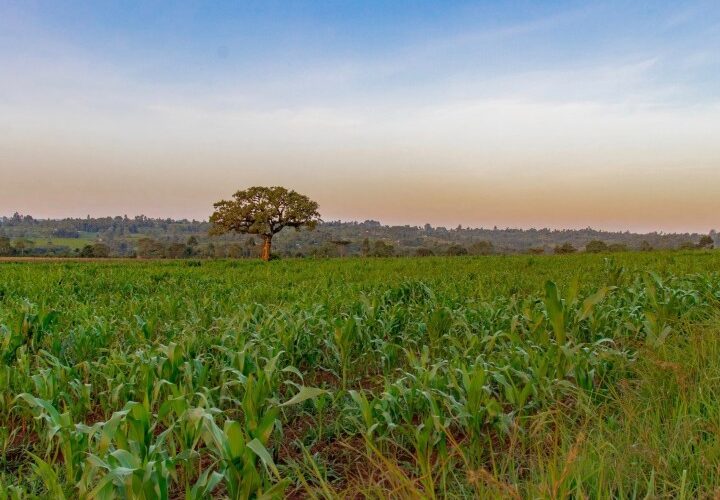Through the USAID-funded East Africa Catalytic Sustainable Agribusiness Investment Project (CSAI), Climate Focus collaborated with SNV and UNIQUE to increase the volume of private capital deployed in Climate-Smart Agriculture (CSA) ventures. Through its incubation and acceleration services, the program supported over 30early and growth stage enterprises in the dairy, ICT, fresh produce, cotton, and aquaculture sectors, closing US$1.37 million in investments, and developing a pipeline of an additional US$8.25 million.
In addition to its acceleration work, Climate Focus conducted a series of analyses of investment barriers and possible policy interventions to increase the investment attractiveness of CSA. This research was informed by a public-private dialogue that took place in Nairobi in February 2017, and a series of interviews with market participants and experts. The results of this research were captured in a series of policy briefs:
Brief 1: Enhancing Market Access Through Improved Standardization, Certification and Producer Aggregation Models
Brief 2: Increasing CSA Investment Through Fiscal Incentives
Brief 3: Enhancing Investment Attractiveness in Kenya’s Dairy Sector
Brief 4: Enhancing Investment Attractiveness in Kenya’s Cotton Sector
Brief 5: ICT Solutions for Inclusive Agricultural Value Chains
The main findings and recommendations are summarized below. The full policy briefs are available for download on this page.
Brief 1: Enhancing Market Access Through Improved Standardization, Certification and Producer Aggregation Models
Producers’ constrained access to markets continues to be a key challenge and is partially responsible for low levels of investment at the production stage. Improved producer aggregation, targeted support for adherence to production standards and certification schemes, as well as the integration of CSA criteria into such standards and certification schemes could significantly enhance investment attractiveness. Despite CSA having been declared a priority for Kenya, a comprehensive inclusion of CSA criteria into production standards remains to be completed. As a result, producers, processors, and manufacturers are not consistently required to take CSA considerations into account. Key opportunities for mainstreaming CSA include:
- CSA criteria can be integrated and mainstreamed into mandatory standards to enter formal markets through a targeted public-private partnership that brings together key institutions
- From the success of developing national KenyaGAPs based on the international GlobalGAPs, CSA-oriented certification schemes could offer price premiums in niche market segments
- With public support and financial incentives, farmer aggregation models such as cooperatives can serve as delivery agents for CSA-based farming principles while supporting farmers to enter formal or higher-value markets.
Brief 2: Increasing CSA Investment Through Fiscal Incentives
Files: brief_2_-_increasing_csa_investment_through_fiscal_incentives
Similar to production standards, Kenya’s fiscal policies currently lack consistent inclusion of CSA criteria. Inclusion of such criteria could serve as a powerful incentive for businesses and investors to target CSA related investments. The division of institutional responsibility for setting the national CSA strategy, designing new taxes and subsidies (national treasury), and provision of agricultural extension and design of local policies (county governments) complicates efforts to design and enforce fiscal policy. Several case studies point to opportunities for crafting more CSA friendly policies that take into account and create linkages between national and regional institutions:
- “Eco-compensation”: China offers a suite of “hybrid” policies that can be adapted to local contexts, including payments for ecosystem services, subsidies, pollution charges, deforestation fees, VAT exemptions, and green credits
- Ecological Fiscal Transfers: Brazil and India have incorporated ecological indicators into their decision-making for allocating the national budget to regions, with India using forest cover and Brazil allowing for more flexible indicators like watershed or conservation areas
- Agriculture growth poles exist in many forms throughout Africa and serve as a defined geographic region for incentivized investment into agricultural transformation and development objectives.
Briefs 3 & 4: Enhancing Investment Attractiveness in Kenya’s Dairy and Cotton Sector
Files: brief_3_-_enhancing_investment_attractiveness_of_kenya_dairy_sector and brief_4_-_enhancing_investment_attractiveness_of_kenyas_cotton_sector
The vast majority of Kenya’s milk is produced, traded, processed and sold in informal markets that are not in compliance with quality or production standards. The market’s informality is a major barrier to investment and adoption of CSA practices. While Kenya aims to be a net dairy exporter by 2030, achieving this would require substantial improvement in milk productivity. Similarly, cotton is viewed as a strategic sector for export but suffers from low productivity and few targeted policies or programs to boost production and meet domestic and international demand. The two briefs explore opportunities for enhancing investment attractiveness by formalizing the sectors, creating stronger value chain linkages, and enhancing productivity:
- Financial incentives such as quality-based payments can enable higher quality production and boost productivity, especially if combined with access to improved feed and fodder that reduces GHG emissions in the dairy sector and resilient/high-yielding cotton seed varieties
- Targeted financial incentives aimed at upstream actors (such as cotton ginneries and milk processors) can channel finance to supply farm inputs and machinery and to invest in farmer training
- Strong public sector action is needed to provide public programs for improving irrigation and road infrastructure, provision of high-quality inputs, and support for farmers who do not receive private extension services.
Brief 5: ICT Solutions for Inclusive Agricultural Value Chains
Files: brief_5_-_ict_solutions_for_agricultural_value_chains (1)
Information and Communication Technology (ICT) solutions hold great potential for removing inefficiencies in and transforming agricultural value chains. We assessed ICT applications in agriculture across five key services: Information Sharing, Information Analytics, Access to Markets, Access to Finance and Tracking and Traceability (T&T). While the identified solutions can and do generate real farmer impact, we found the ICT solutions overall to be at a nascent stage. Few are investment-ready with sustainable business models. Additional public and private support can exploit the full potential of ICT in agriculture. The main findings include:
- Data generation and sharing is a key asset for ICT solution providers and can be the basis for mutually beneficial partnerships with other service providers to generate revenue
- Governments can expand the ICT infrastructure and promote mobile phone usage, invest in expanding the digital literacy of farmers and work to improve ICT incubation and accelerator ecosystems with a focus on agriculture and development objectives
ICT solutions providing access to finance are seen as a ready entry point for impact investors with an interest in ICT for agriculture in Africa. Enhancing access to finance should however be accompanied by better training, inputs and distribution systems.





